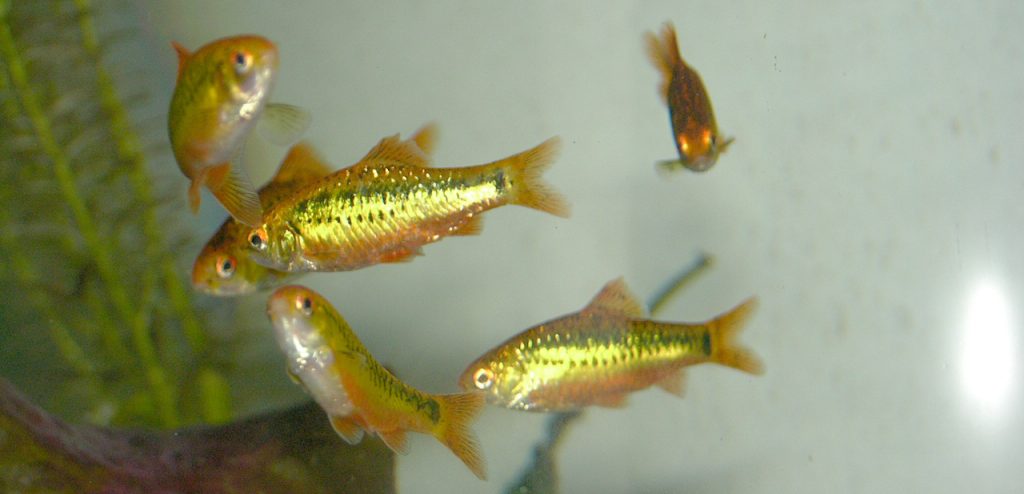
Source: flickr.com | Derek Ramsey
The Gold Barb (Puntius sachsii) is a species of barb fish that gets its name due to its deep, yellow-gold metallic coloring. It’s relatively small, and adapts well to a community tank and changing water conditions, which makes them ideal for the beginning aquarium enthusiast.
This fish is actually a result of selective breeding. The original species, the Chinese Barb, is more olive green and originated in China. In the wild, the precursor to this fish inhabits fast moving waters and prefers to travel in schools.
Table of Contents
Tank Considerations
As mentioned, the Gold Barb is a small fish and only grows to approximately 3 inches. They do prefer to travel in a school so plan on having a group of at least 3 or more in at least a 20 gallon tank.
As with many barb fish, the Gold Barb is a very active swimmer and will need plenty of room to move. It’s a good idea to house these fish in aquariums that are longer than taller to maximize the amount of space they have to swim back and forth.

Source: flickr.com | Fred Hsu
Along with plenty of open areas, these fish also need to have ‘caves’ and some dense vegetation in which to hide in case they feel threatened.
While these fish are peaceful, you’ll want to be careful when housing them with long-finned fish as they are known to be nippers, such as angels or betters.
The Gold Barb is more tolerant to changing water conditions than are other freshwater tropical fish, but prefer to inhabit waters with these qualities: temperature range of 70-77˚ Fahrenheit, pH 6-8 and a hardness of 5-25 dH.
Health & Care
As stated, the Gold Barb is a very hardy fish and can easily adapt to a wide range of water conditions, however, it’s always a good policy to make sure water is as stable as possible in order to ensure your fish don’t become stressed, which can lead to disease.
The most common disease affecting freshwater tropical fish is called Ich, also known as white spot disease. Symptoms of this disease are tiny white spots that dot the fish’s body, clamped fins and shallow breathing. This disease can be brought on by a bacterial infection or by stress, which can come about due to poor water quality, a poor diet or aggressive tank mates.
As with most things, an ounce of prevention is worth a pound of cure, and you’ll be able to keep your fish happy and healthy as long as you follow some basic guidelines. 1. Maintain stable, high quality water. 2. Make sure your fish are well-fed and getting the proper nutrition. 3. Make sure to keep your fish from getting stressed. If you follow these guidelines, your Gold Barb fish should provide you with years of viewing enjoyment.
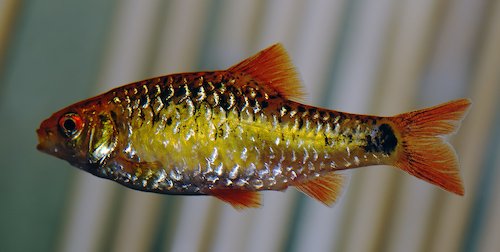
Source: flickr.com | André Karwath
Diet
The Gold barb is an omnivore and will be happy with both plant and animal foods.
A high quality flake food should make up the bulk of their diet and you can supplement that with some meaty treats such as brine shrimp (frozen or live) or blood worms. They will also happily accept algae wafers and certain aquarium plants. A good rule of thumb is to feed these fish no more than 3 times a day and no more than they can eat in 3 minutes or less otherwise you risk food falling to the bottom and polluting your tank.
Breeding
Idenfifying the sex of Gold Barb fish is relatively easy; the females have dull colors compared to the males and have a rounder belly.
Since these fish are all bred in captivity, breeding the Gold Barb is easy, even for the beginner. As with most barb fish, though, you’ll want to make use of a specialized breeding tank where your breeding pair are separated from the rest of the community.
Like most barbs, the Gold Barbs are egg scatterers, which means they scatter their eggs all over the bottom as opposed to depositing them in one location. In your breeding tank, you’ll want to set up a divider to separate the fish from their eggs once they’re laid because they will eat them if given the opportunity.
Keep the lights dim and the water pH between 6-7 for best results.
Eggs generally hatch in about 48 hours after spawning and the fry will be able to free-swim in a few days. Feed them infusoria or a good fry food to help them grow. Note that both the eggs and the fry are sensitive to bright light, so you’ll want to keep the breeding tank dark for a few weeks even after the eggs hatch.
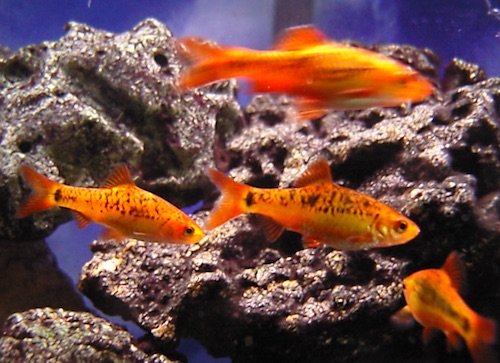
Source: flickr.com | Fred Hsu
Summary
- Fish Size: 3 inches
- Aquarium Size: 20 gallons
- Diet: Omnivore
- Water Temperature: 70-77˚ Fahrenheit
- Water pH: 6-8
- Water Hardness: 5-25 dH
- Breeding: Easy
The Gold Barb is a great fish for someone who’s just getting into the hobby. They’re readily available at most pet retailers, they’re easy to care for and they generally get along well in the community tank. With proper care, these fish can live up to 5 years or more.

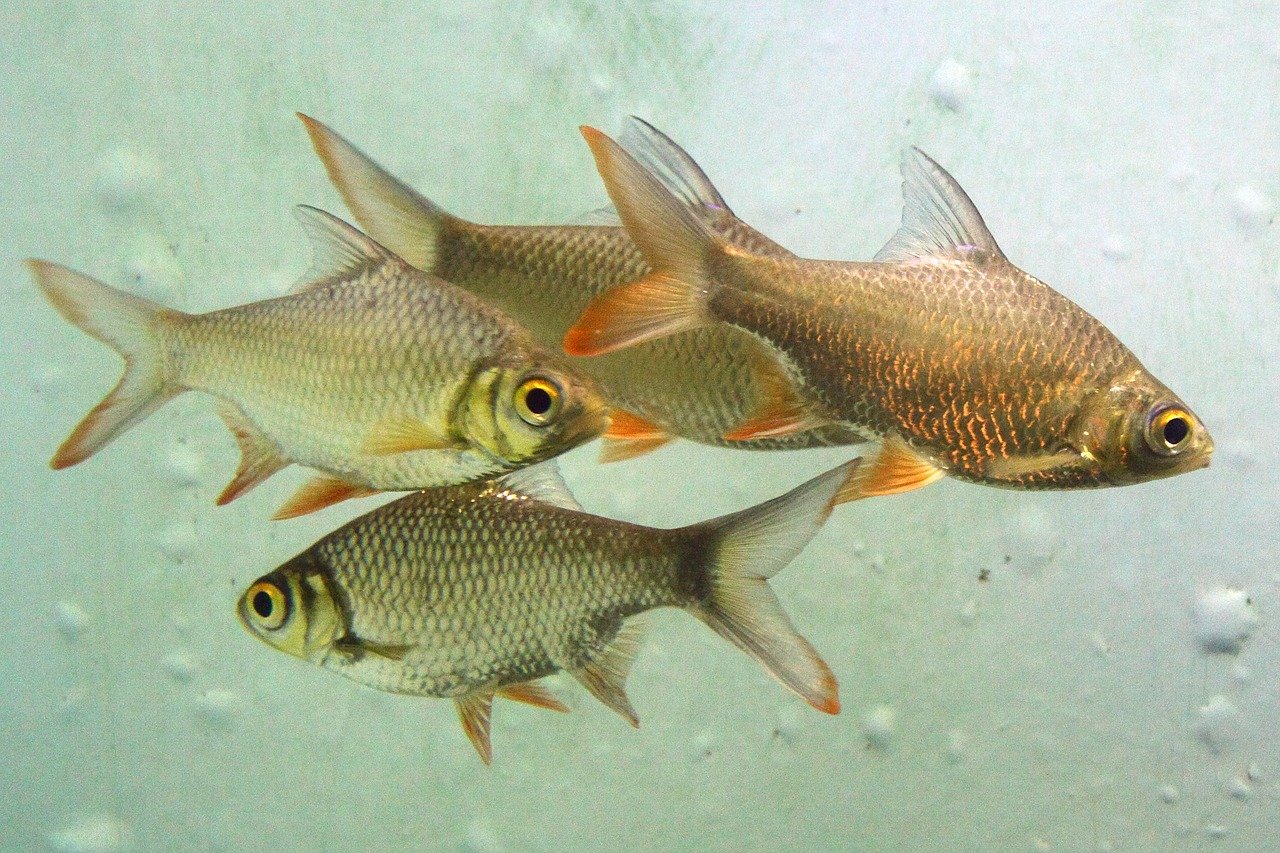
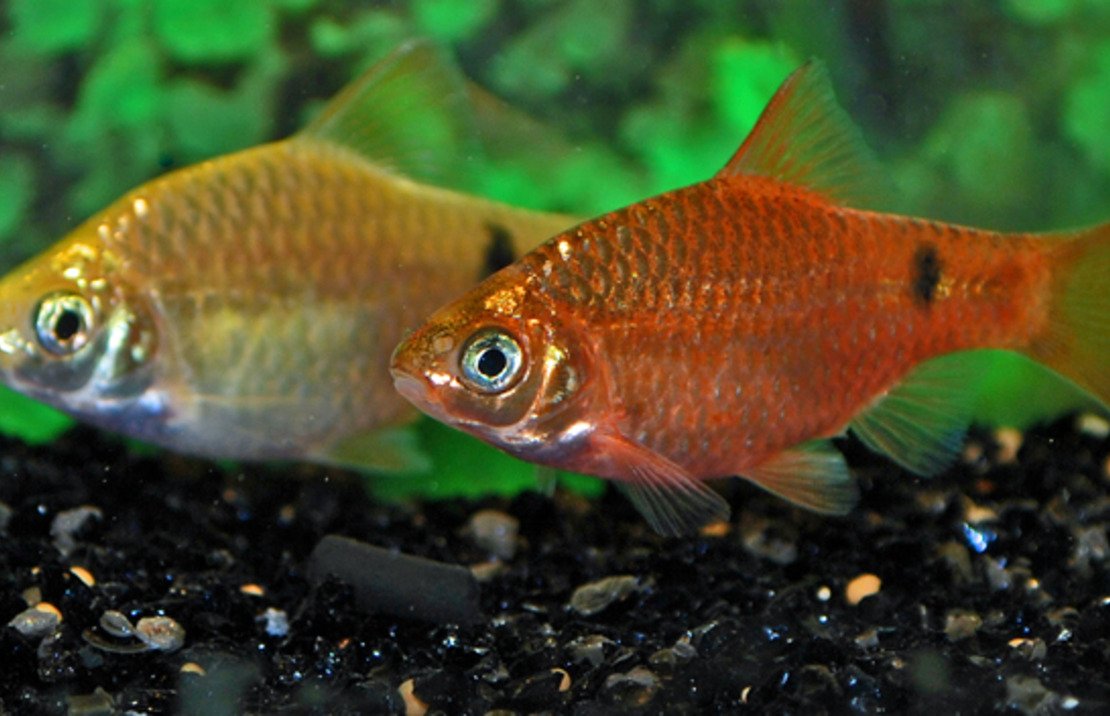

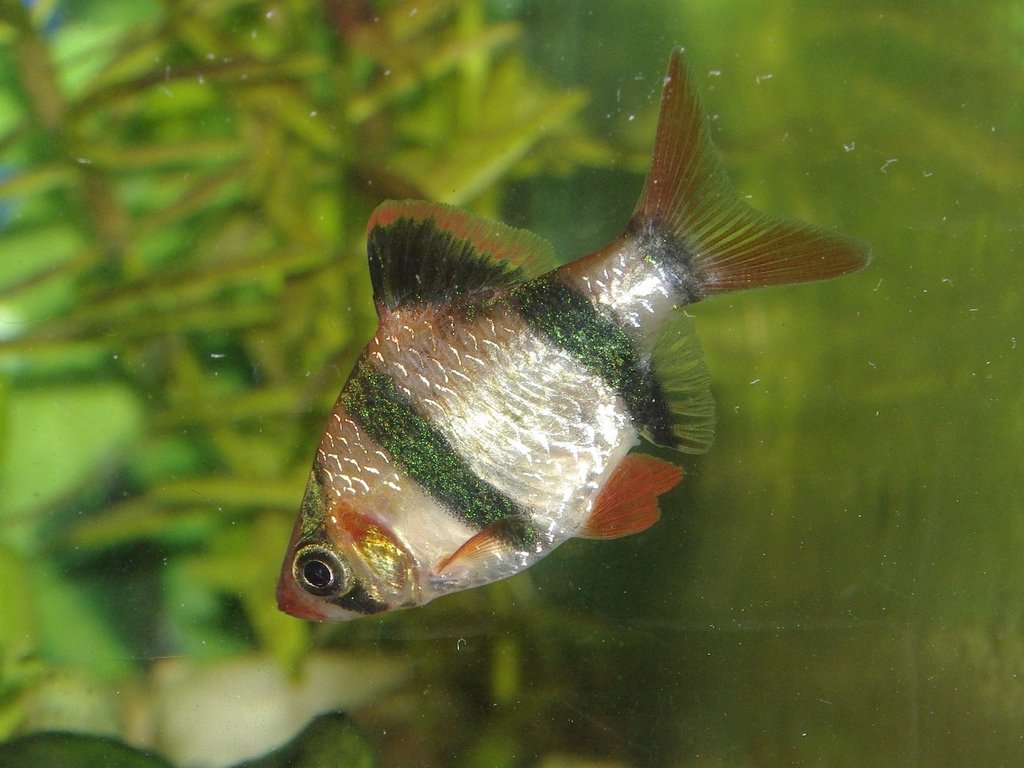
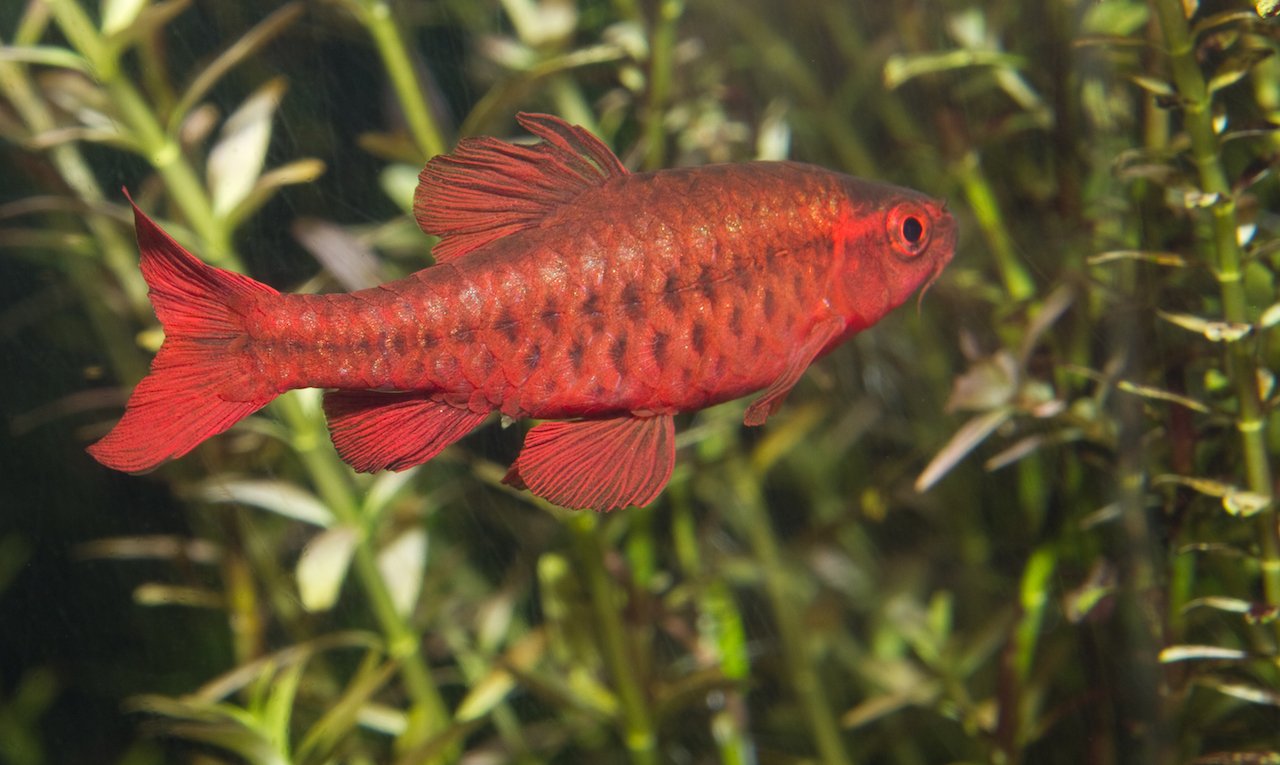
Leave a Reply